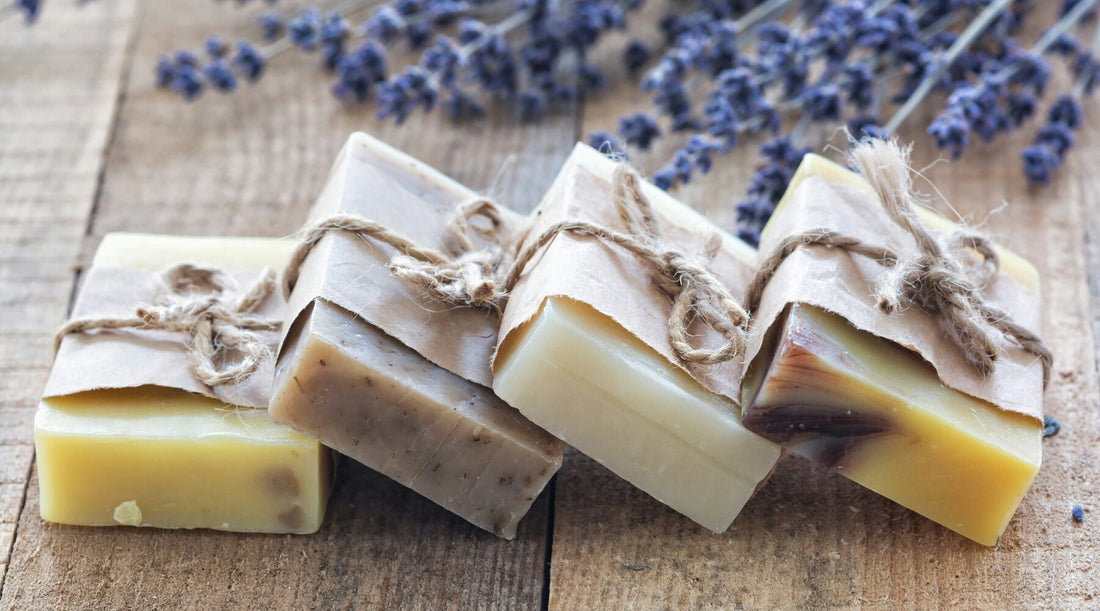Things to Know Before You Start a Soap Making Business

Starting a soap-making business can be a fun and rewarding venture. Not only does it allow you to express your creativity, but it also provides an opportunity to make some good money while doing something you love. However, before diving in, you need to understand a few key aspects to ensure that your business thrives.

Top Platforms to Launch Your Soap Making Business
If you're considering launching a homemade soap business, I strongly suggest starting with online platforms. They offer fantastic exposure and make it easier to reach a broader audience. Here are some usual platforms to consider:
- Etsy - Etsy is a popular choice for handmade items, and it offers several tools to help you manage your shop efficiently. It's user-friendly and has a large customer base looking specifically for unique and handcrafted products. Additionally, you can easily find tips online to boost traffic to your Etsy shop, making it easier to run in the long term.
- Shopify - Shopify allows you to create your own online store with customizable templates. It’s great for building a brand from scratch and offers excellent support and tools for marketing and sales.
- Amazon Handmade - Amazon Handmade provides access to millions of shoppers who are already on Amazon. It’s a robust platform but requires approval to start selling, ensuring that only quality homemade products make it to their listings.
- Instagram and Facebook Shops - Social media platforms like Instagram and Facebook have integrated shopping features that make it easy to sell directly to your followers. With these tools, you can engage with customers, run ads, and provide seamless purchasing experiences.
Perks of Running a Soap Making Business
Running a soap-making business comes with numerous benefits, especially when compared to other homemade businesses:

-
Creative Freedom
Unlike many other small businesses, soap making allows you to experiment endlessly with colors, scents, and designs. Each bar can be a unique creation.
-
Low Startup Costs
You don’t need a massive investment to get started. The basic ingredients and equipment are relatively inexpensive, making it accessible for most people.
-
High Demand
Handmade soaps are always in demand because they often use natural ingredients and avoid harmful chemicals found in commercial soaps. People appreciate the quality and craftsmanship that goes into each bar.
-
Flexibility
You can run your business from home, giving you the flexibility to balance work and personal life effectively.
How to Make a Bar Soap At Home?
Making soap at home isn't just for professionals; even beginners can do it with the right guidance. Here are the essentials:
1. Prepare Soap IngredientsYou'll need the following ingredients:
-
Lye (Sodium Hydroxide): Essential for saponification, the chemical reaction that turns fats into soap.
-
Base Oils: Such as olive oil, coconut oil, or palm oil, which form the soap's foundation.
-
Distilled Water: To dissolve the Lye.
-
Fragrances and Colorants: Optional but can add appealing scents and colors to your soap.
-
Safety Gear: Goggles, gloves, and protective clothing.
-
Mixing Bowls: Heat-resistant bowls for mixing ingredients.
-
Thermometer: To monitor the temperature of oils and Lye solution.
-
Stirring Utensils: Stainless steel or silicone spatulas and spoons.
-
Soap Molds: Silicone molds work best for easy release.
To get started on your soap-making journey, begin with these straightforward steps:

Clean your workspace thoroughly and lay out all your tools and ingredients. Accurate measurements are crucial, so use a digital scale for precision.
Step 2 Mix Lye solutionSlowly add Lye to distilled water (never the reverse) in a well-ventilated area. Stir until fully dissolved and let it cool to around 100°F.
Step 3 Heat base oilsMelt your base oils in a pot over low heat until they reach around 100°F, similar to the Lye solution temperature.
Step 4 Combine Lye solution and oilsCarefully pour the Lye solution into the melted oils. Use a stick blender to mix until "trace" forms—a stage where the mix thickens and traces of the blender remain visible.
Step 5 Add fragrance and additivesAt trace, you can add fragrances, colorants, or other additives like oatmeal or dried herbs. Blend these thoroughly into the mixture.

Pour the soap mixture into molds, smooth the top with a spatula, and cover with a towel to retain heat. Allow it to harden for 24-48 hours before removing it from the molds.
Step 7 Package and label your soapCut the soap into bars and cure them for 4-6 weeks to allow excess water to evaporate. Once cured, package and label them creatively.

- Decorate your soap with creative stickers
Add beautiful designs or prints to your soap using creative stickers. Suppliers like Munbyn offer various options, including star-shaped, round, or holographic stickers, etc.
- Label your soap for branding
Use adhesive printable labels to enhance your soap's exterior packaging. These labels can carry your brand name, logo, and essential product information. Owning a thermal label printer like those available on Munbyn can streamline this process, especially when dealing with large orders.
- Use eco-friendly materials
Choose eco-friendly materials like honeycomb wrapping paper for packaging your soap. It not only looks attractive but also appeals to environmentally-conscious customers.
- Print a perfect shipping labels
Make sure your shipping labels are clear and legible to reduce delivery mishaps. A professional thermal printer ensures your labels look perfect every time.
How to Make a Soap to Sell?
Creating soap to sell involves more than just following a recipe. Let's dive into some essential tips to elevate your product.
1. Use Safe and High-Quality IngredientsAlways use high-quality and safe ingredients. Customers will notice the difference and appreciate the thoughtfulness you put into choosing premium components. Investing in quality ensures a better product that can help build customer loyalty and trust.
2. Find Your NicheIdentify your target market and cater your products to their needs. Whether it’s vegan soap, organic bars, or specialized soaps for sensitive skin, knowing your audience helps in precisely tailoring your products. Research trends and feedback to continuously adapt and meet market demands.
3. Add some creative touchesMake your soap stand out by getting creative with its packaging, appearance, and shape. Unique touches like intricate designs or unusual shapes catch the eye and make your product memorable. Consider incorporating eco-friendly packaging to appeal to environmentally-conscious consumers.
Again, you can use fun stickers and labels to decorate your soap and packaging so that they not only reflect your brand’s personality but also add an extra layer of charm and attractiveness to your products.
4. Making it specialDifferentiate your soap with unique colors, scents, or special ingredients. Experiment with new combinations to find what works best and stands out in the market. Offering seasonal or limited-edition varieties can also create excitement and urgency among buyers.
5. Build a strong brand identityDon’t just imitate competitors; build a strong, unique brand identity. Utilize social media platforms for branding and promotion, showcasing what makes your soap special. Consistent branding across all touchpoints helps create a cohesive and recognizable image.
6. Set a friendly priceCustomers look for cost-effective products, and soap is no exception. Ensure your pricing reflects the quality but remains competitive to attract more buyers. Regular promotions or discount offers can also encourage repeat purchases and boost overall sales.
Summing Up
Starting a soap-making business involves creativity, planning, and dedication. From choosing the right platform to understanding the detailed process of making and packaging your soap, each step plays a critical role in your success. Remember to use high-quality ingredients, create a strong brand identity, and engage with your target market effectively. By following these guidelines, you can craft beautiful, unique soaps that not only stand out but also bring joy to your customers.






